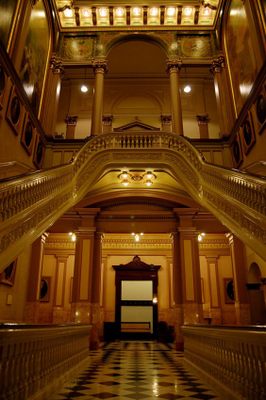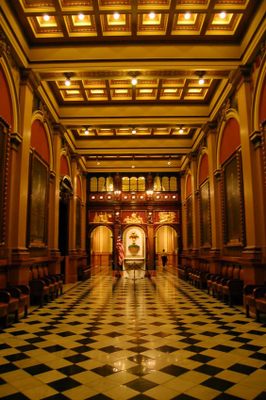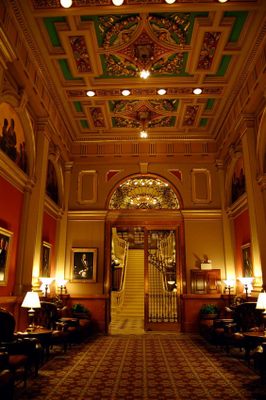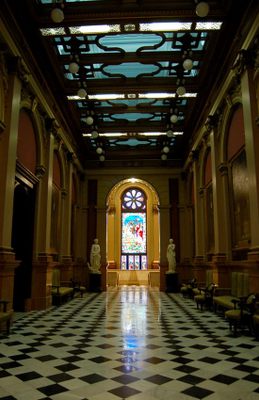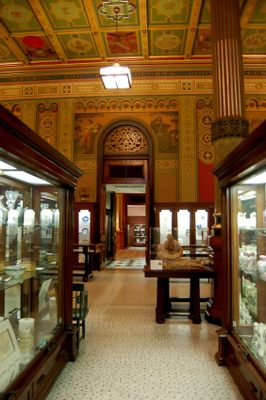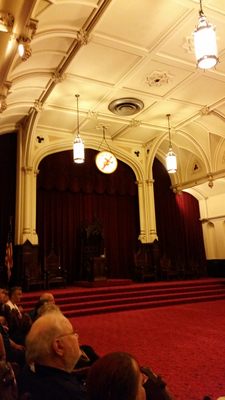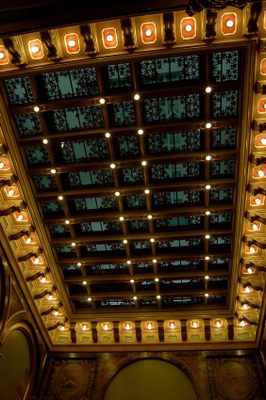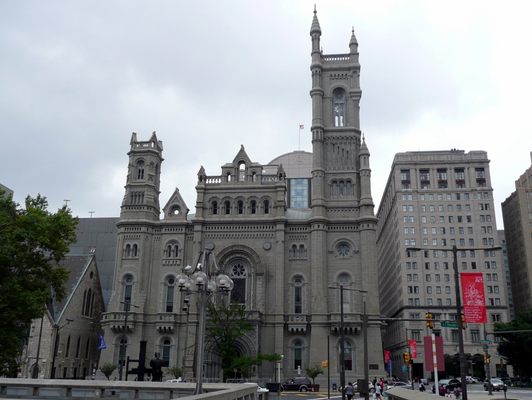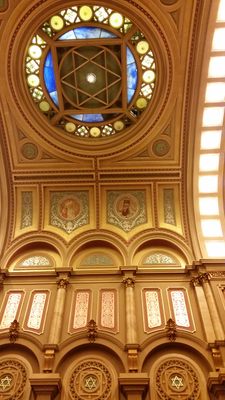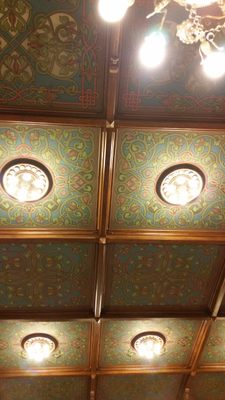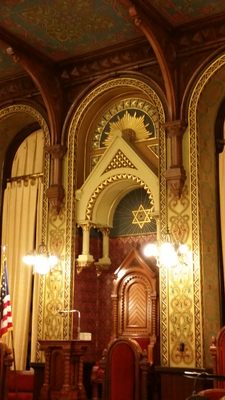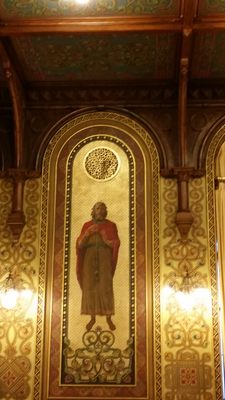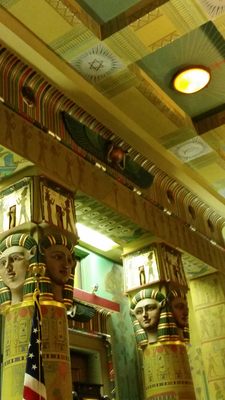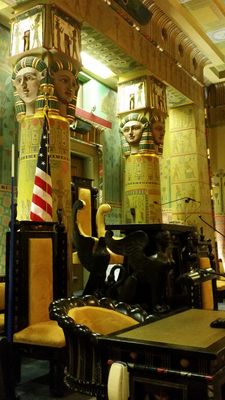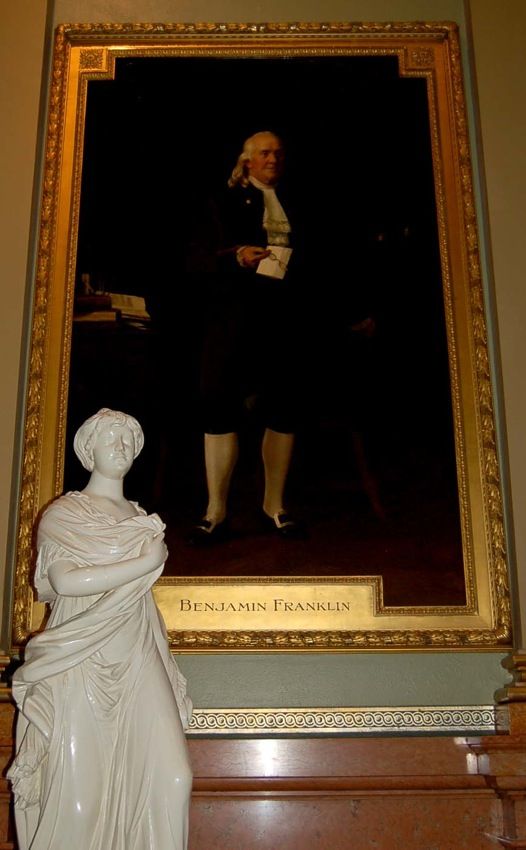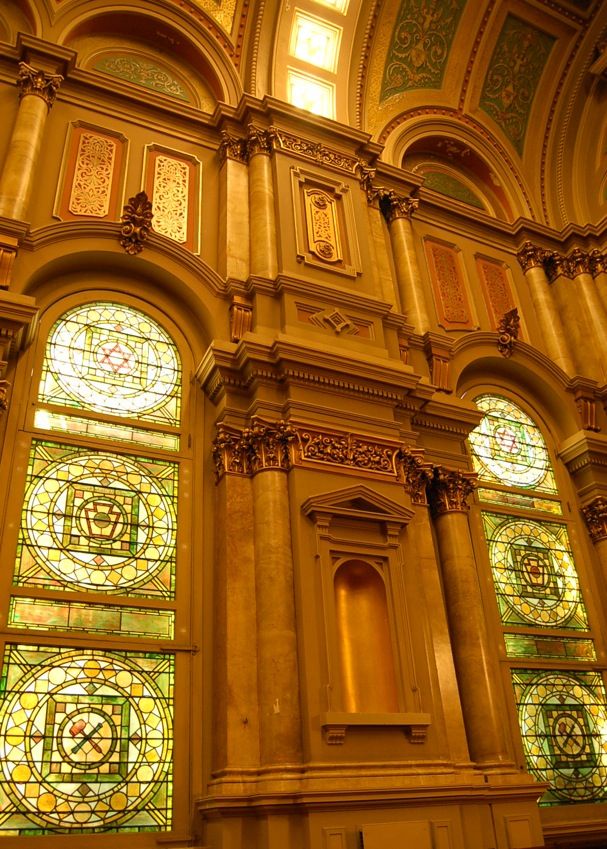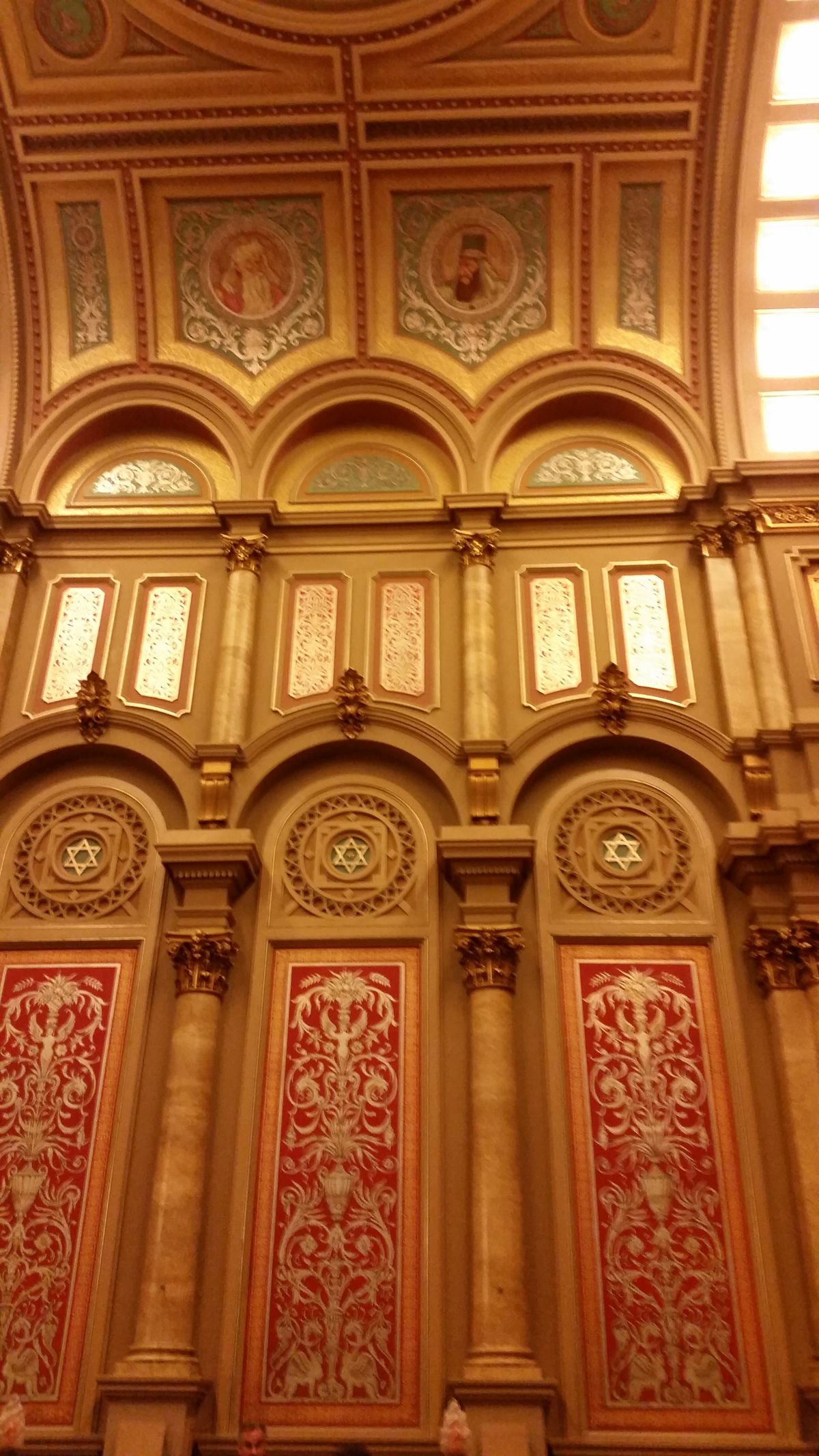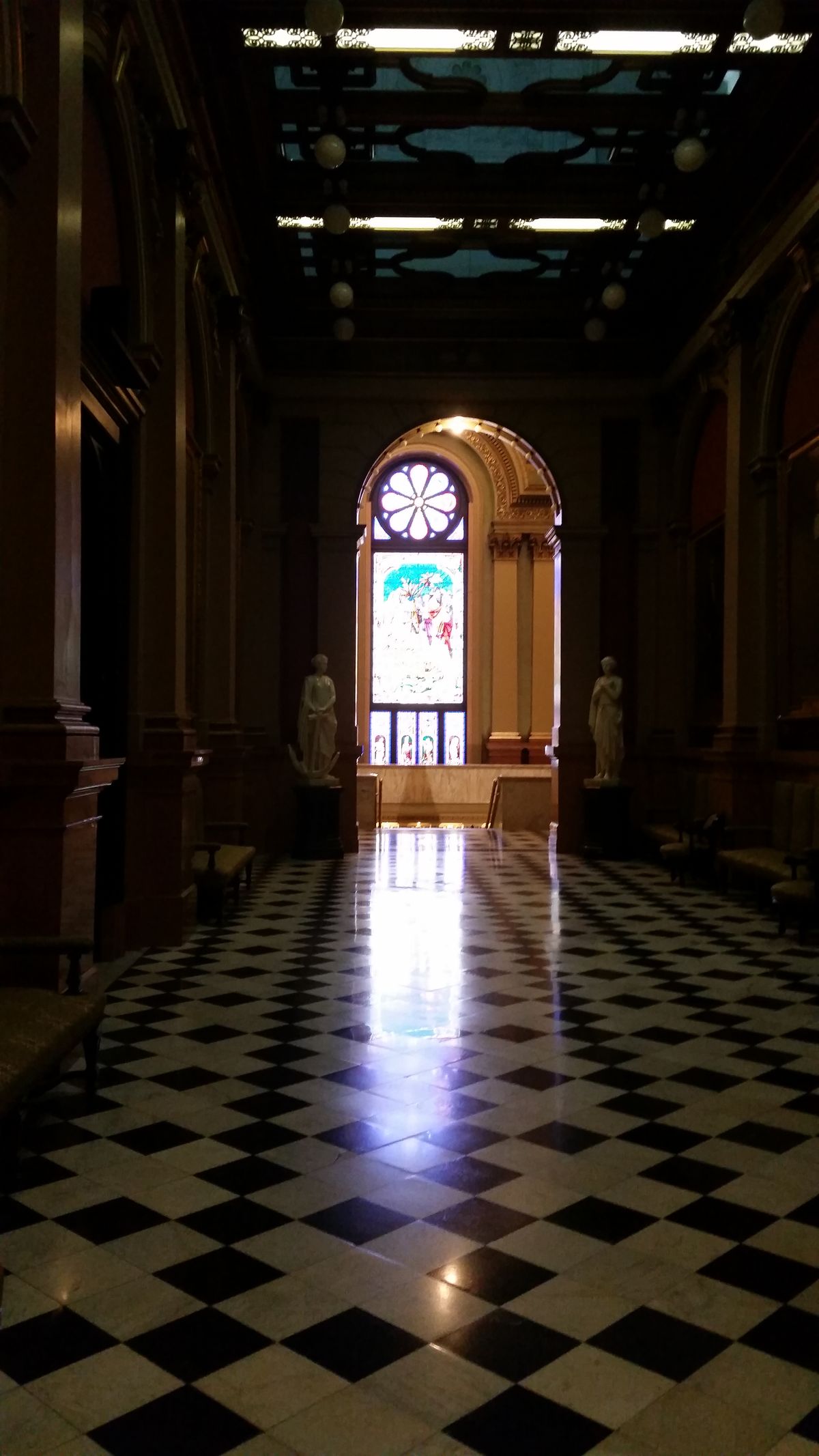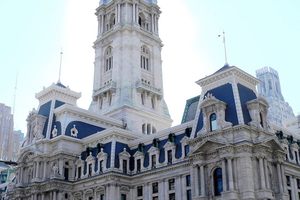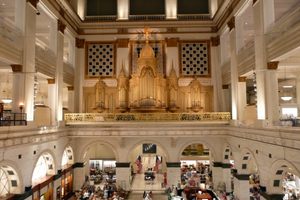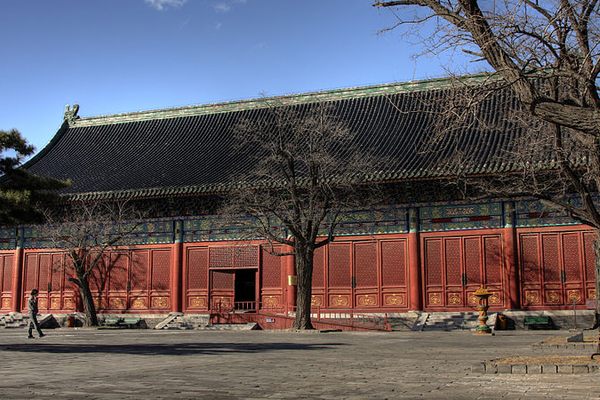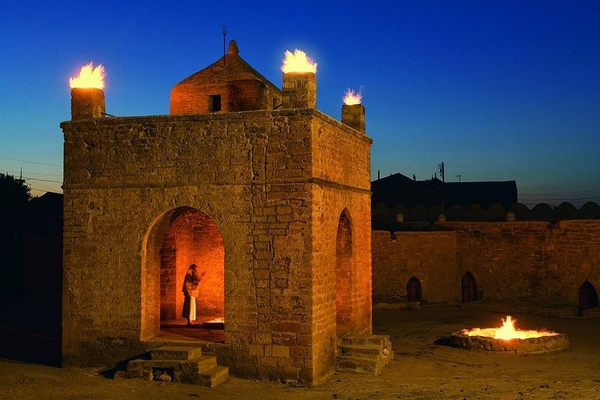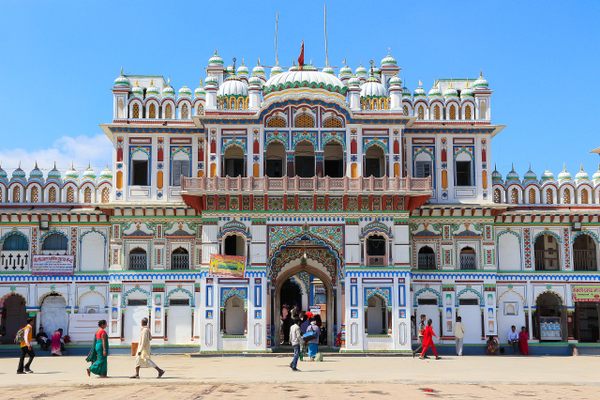About
The Masonic Temple of Philadelphia, or as it's properly known "The Right Worshipful Grand Lodge of the Most Ancient and Honorable Fraternity of Free and Accepted Masons of Pennsylvania and Masonic Jurisdiction Thereunto Belonging," is an astonishingly lavish building. In 1873, the New York Times described it as "the largest, costliest, and most magnificent structure consecrated to Masonry in the World."
Freemasons are the subject of many conspiracy theories, and have been for as long as they have existed. Originally an actual type of trade union, the Freemasons have a somewhat unclear modern history. What is known is that, by the 1700s, the Masons had been taken over by aristocrats, noblemen, and politicians, who couldn't have built an actual building if their lives depended on it. The new Freemasons were one among a number of new clubs and movements which allowed members to talk freely about heretical ideas—including democracy and other Enlightenment philosophies.
In this context, it's unsurprising that both George Washington and Ben Franklin found themselves drawn to the organization, which, like any good club, also allowed for a great deal of networking. The Masonic movement in Philadelphia existed long before America was even founded (the "Modern Masons" of 1730 were later eclipsed by the "Ancient" Masons in 1761) and was likely a hotbed of revolutionary thought and planning.
Building was begun on Philadelphia's current massive Masonic temple in 1868, during the height of Masonic wealth and influence. With massive mounts of money to spend and extensive political influence in Philadelphia, the Masons held nothing back. Each room was decorated along a theme, in a highly ornate style. Besides a massively grand staircase, the temple contains an Egyptian room, a Corinthian room, a Moorish room, a Renaissance hall, a Norman hall in Rhenish Romanesque style, and the Ionic hall, with full-length portraits of "Right Worshipful Past Grand Masters," among others.
It is said that every room has had one mistake purposefully inserted into the architecture or decoration to show that no man is perfect compared to God.
Today, lacking the kinds of funds and influence they had in the 1800s, the Masons are struggling to pay for the upkeep of the massive building, and the halls can be rented out for weddings and other various non-Masonic functions.
Related Tags
Community Contributors
Published
July 4, 2010

